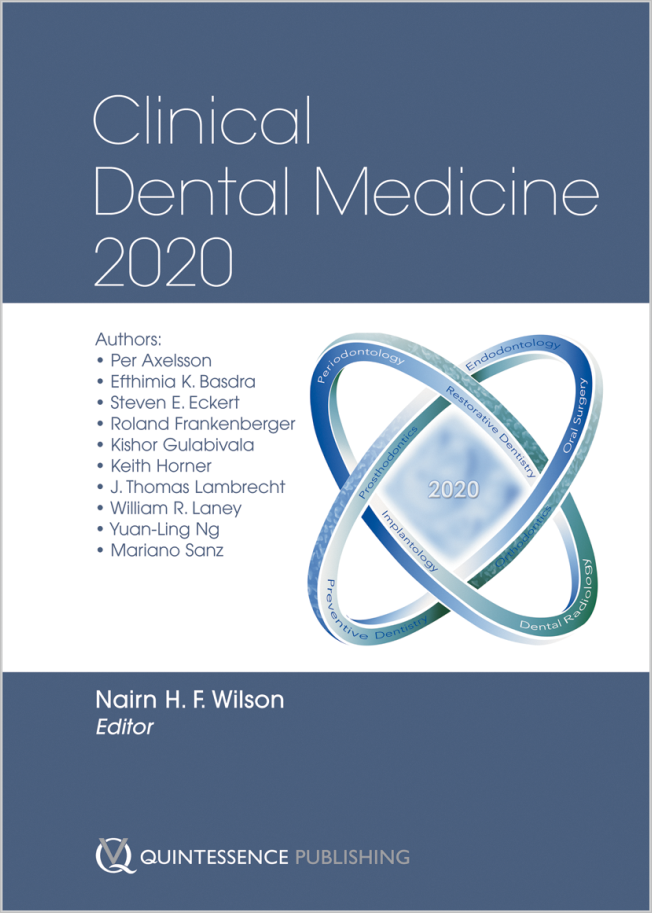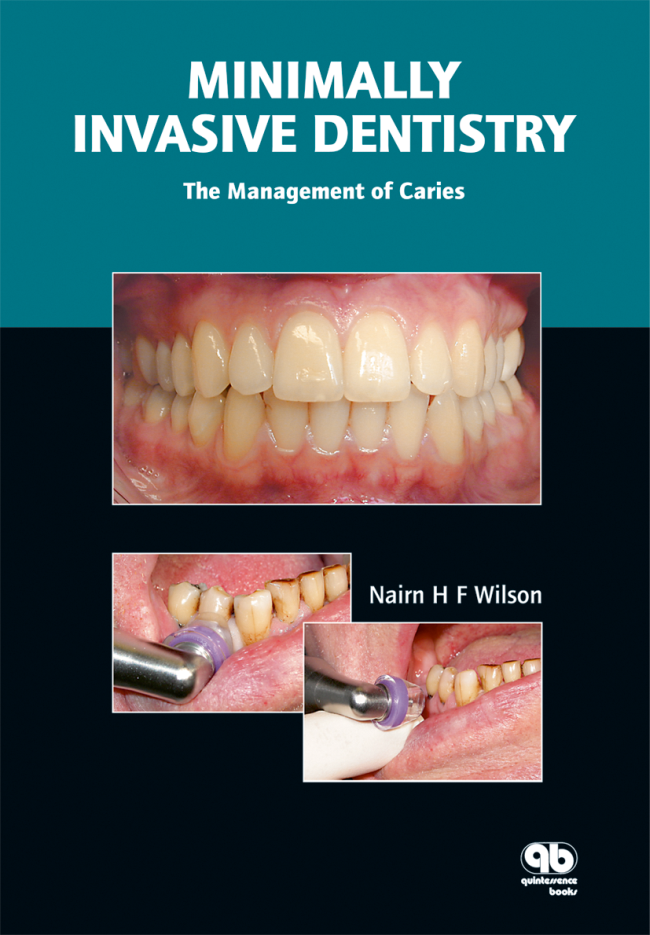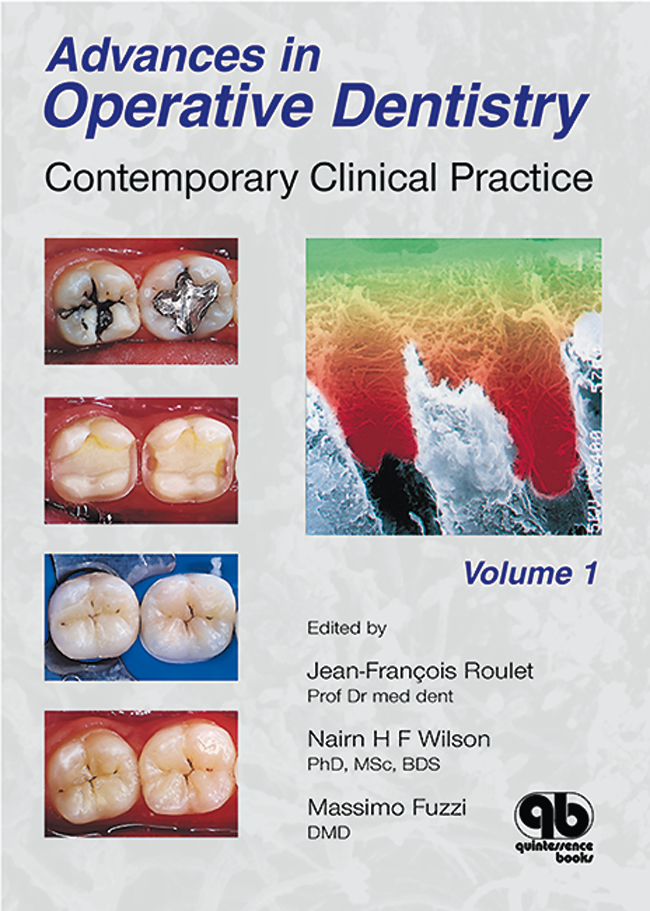Quintessence International, 7/2014
DOI: 10.3290/j.qi.a32032, PubMed ID (PMID): 24847492Pages 547-548, Language: EnglishKielbassa, Andrej M. / Lynch, Christopher D. / Wilson, Nairn H. F.The Journal of Adhesive Dentistry, 1/2006
DOI: 10.3290/j.jad.a10899, PubMed ID (PMID): 16536345Pages 47-51, Language: EnglishWilson, Nairn H. F./Gordan, Valeria V./Brunton, Paul A./Wilson, Margaret A./Crisp, Russell J./Mjör, Ivar A.Purpose: This two-centre study evaluated the clinical performance of Class I and Class II restorations of the giomer material Beautifil, placed using Fluorobond, a self-etching adhesive system, to determine the suitability of the test system as an alternative for the restoration of posterior teeth.
Materials and Methods: A total of 108 restorations, comprising 72 Class II and 36 Class I restorations, was placed predominantly in molars (82%). Evaulations using modified USPHS/Ryge criteria were conducted at baseline and thereafter at 6 months and 1, 2, and 3 years. Die stone replicas of the restored teeth were examined retrospectively.
Results: A total of 5 restorations was found to fail during the study - 3 in the first year and 2 during the third year of the study. Occlusal marginal adaptation was less than ideal at baseline in 11% of cases, primarily as a consequence of overcontouring, as observed in the die stone replicas. The combined percentage Alpha ratings at 3 years were: colour match, 98%; marginal adaptation (occlusal), 78%; marginal adaptation (proximal), 97%; anatomic form (occlusal), 99%; anatomic form (proximal), 95%; surface roughness (occlusal), 100%; surface roughness (proximal), 100%; marginal staining (occlusal), 90%; marginal staining (proximal) 81%; interfacial staining (occlusal), 99%; interfacial staining (proximal), 100%; contacts (occlusal), 95%; contacts (proximal), 93%; sensitivity, 100%; secondary caries, 100%; lustre of restoration, 100%.
Conclusion: It is concluded that the 3-year performance of Fluorobond-bonded Beautifil for Class I and II restorations demonstrated some marginal changes, but most of the direct evaluation ratings were > 90% Alpha, with the performance observed being similar in the two centres.
Keywords: giomer, self etching adhesive, clinical trial, posterior restoration
Quintessence International, 5/2001
Pages 391-395, Language: EnglishDuncalf, William V. / Wilson, Nairn H. F.Objective: The purpose of this study was to compare and contrast the performance, in terms of marginal adaptation, of a non-gamma-2 amalgam alloy with a compact-filled light-cured composite in the restoration of Class II preparations of conservative design. Method and materials: Fifty recently extracted teeth were selected for the study. The teeth were restored with either a non-gamma-2 amalgam alloy, Dispersalloy, or a compact-filled resin composite, Z100, using standard techniques. The marginal adaptation of the restorative materials to the proximal surface outline form of each preparation was assessed at magnification 330. Results: Highly significant differences were demonstrated in the mean percentages of perfect margins in all 3 segments of the proximal boxes of the restorations with the resin composite performing significantly better than the amalgam. The percentages of marginal fissuring were significantly higher in the amalgam restorations, except at the cervical margin, where the incidence of fissuring was almost the same for the amalgam and resin composite restorations. The resin composite restorations had significantly fewer underfilled margins than the amalgam restorations. Conclusion: In the conservative Class II preparations, the amalgam restorations were of poor quality with respect to marginal adaptation, compared with the resin composite restorations. It is suggested that the use of amalgam as a control in a clinical evaluation of resin composite restorations in conservative preparations cannot be justified, because it is apparently not possible to compare restorations of equivalent initial quality.
Quintessence International, 5/2000
Pages 347-352, Language: EnglishDuncalf, William V. / Wilson, Nairn H. F.Objective: The purpose of this study was to compare the marginal and internal adaptation of a non-gamma-2 amalgam and an ultrafine compact-filled light-cured composite in small to moderate-sized Class II restorations of conventional design. Method and materials: Fifty recently extracted human premolar and permanent molar teeth were selected for the study. The teeth were restored with either a non-gamma-2 amalgam alloy or a light-cured resin composite. The marginal adaptation of the restorative materials to the proximal surface outline form of each preparation was assessed. The mean percentages of perfect margins, marginal fissuring, and underfilled margins for the 2 restorative materials were recorded and statistically analyzed. Results: Both materials performed equally well in the buccal and lingual segments of the proximal box. At the cervical margin, the resin composite restorations showed a significantly greater number of imperfect margins and marginal fissuring. The incidence of underfilled margins was low for both restorative materials even at the cervical margin. Conclusion: Although there was some cause for concern about the marginal adaptation of the resin composite restorations along the cervical margin, the findings support contemporary teaching that small to moderately sized conventional Class II preparations may justifiably be restored with an appropriate resin composite.
Quintessence International, 6/1999
Pages 405-411, Language: EnglishWilson, Nairn H. F. / Cowan, Anthony J. / Crisp, Russell J. / Wilson, Margaret A.Objective: A general dental practice study investigated the use of a resin-modified glass ionomer material as a transitional restoration and as a core buildup material. The study also assessed a resin-modified glass-ionomer luting system. Method and materials: Fifty-one badly broken-down vital permanent molar teeth in 44 patients were restored. No dentin pins were placed; however, preexisting pins were retained in 7 teeth. Following baseline and 3-month assessments, complete veneer gold crowns were placed on the selected teeth. The preparations involved ferruling in sound tooth tissue. The completed crowns were reviewed 3 and 12 months after placement. Modified US Public Health Service criteria were used for assessment throughout. Clinical assessment was complemented by examination of photographic records and replicas obtained from silicone impressions. Results: All 51 transitional restorations were found to be clinically satisfactory at the 3-month review. Nineteen (37%) transitional restorations had limited defects that were eliminated in crown preparation. Of the 51 permanent crowns, 46 (90%) were reviewed at 3 months and 44 (86%) at 1 year. All the crowns reviewed at 3 and 12 months were clinically satisfactory. The luting system investigated showed favorable handling characteristics and excellent short-term performance. Conclusion: The materials investigated are, over a period of at least 12 months, effective in the restoration of broken-down molar teeth destined to be crowned. With the use of these materials and ferruling, the use of dentin pins may be unnecessary in selected cases.







